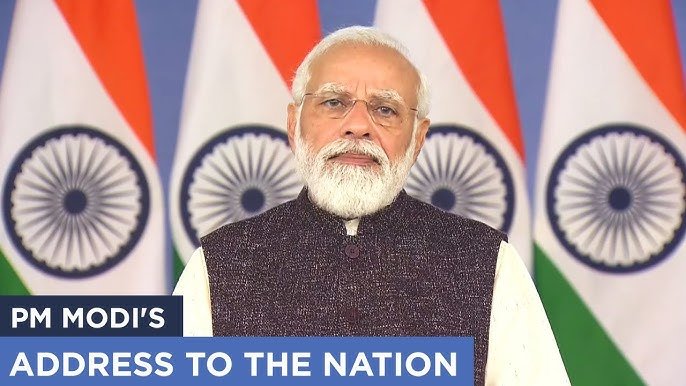The political landscape of Maharashtra, one of India’s most economically and culturally significant states, is characterized by a complex web of alliances, rivalries, and shifting power dynamics. Over recent years, we have witnessed significant developments that underscore the evolving nature of governance within the state. Maharashtra is primarily dominated by three major political parties: the Shiv Sena, the Nationalist Congress Party (NCP), and the Indian National Congress, each contributing to the state’s vibrant political discourse.
Following the 2019 assembly elections, a remarkable coalition emerged known as the Maha Vikas Aghadi (MVA), comprising the Shiv Sena, NCP, and Congress. This alliance was formed largely to counter the electoral challenge posed by the Bharatiya Janata Party (BJP), which had previously held power in the state. However, the tenuous nature of this coalition has led to ongoing internal conflicts and challenges in governance, heightening tensions within the political community.
Recently, Maharashtra’s politics has been influenced by a series of events, including a reshuffling of party leadership and changing allegiances among prominent politicians. The emergence of new leadership in both the Shiv Sena and NCP has been instrumental in reshaping party strategies and voter outreach. Moreover, critical issues such as the economy, education, and public health have surfaced as focal points that political parties must address in their policy frameworks. These pressing matters not only impact governance but also play a significant role in shaping public opinion and electoral outcomes.
The citizens of Maharashtra are keenly aware of these dynamics, as the political environment directly affects their lives. As we navigate this evolving landscape, it is imperative to closely monitor how strategic alliances and ongoing political events will influence the future governance of Maharashtra. The intricate interplay between these factors will undoubtedly shape the state’s political narrative in the months and years to come.
Major Issues Facing Maharashtra
As Maharashtra continues to evolve politically, it finds itself grappling with a multitude of significant issues that shape the landscape of governance and public sentiment. Socio-economic challenges remain at the forefront, particularly in the wake of the COVID-19 pandemic. Economic recovery has become a pressing concern, with unemployment rates rising and many citizens struggling to recover their livelihoods. Political parties have responded by proposing various measures aimed at boosting employment and supporting small businesses, but the implementation of these strategies is critical in garnering public trust.
Environmental concerns also demand urgent attention in Maharashtra. The state is susceptible to various environmental hazards such as flooding, pollution, and degradation of natural resources. Recent events, including adverse weather patterns and public health crises linked to pollution, have prompted widespread protests and activism among citizens advocating for more sustainable policies. The Green Maharashtra movement, for example, has gained prominence, pushing for cleaner air and water, as well as the conservation of biodiversity in urban and rural areas. Political reactions range from promises of stricter regulations to implementation of innovative urban planning initiatives to combat these pressing challenges.
Governance issues further complicate the political arena in Maharashtra. Allegations of corruption and mismanagement persist, creating public outcry for more transparency and accountability from elected officials. Movements aimed at increasing political awareness among the populace are emerging as citizens demand change and a more participative governance model. The response from political parties has been varied, ranging from reform proposals to efforts in campaigning for a more involved citizenry.
In summary, the major issues facing Maharashtra encompass a realm of socio-economic challenges, environmental concerns, and persistent governance issues. The ongoing protests and movements reflect the collective voice of the populace, which political parties must heed if they wish to gain and maintain public support in the evolving political landscape of Maharashtra.
Maharashtra’s political landscape is characterized by a dynamic mix of established leaders and emerging figures, each wielding significant influence over the state’s governance and policy-making processes. Prominent amongst these is the Chief Minister, Eknath Shinde, who has garnered attention for his decisive leadership style since taking office. Shinde’s tenure has been marked by efforts to bolster the state’s infrastructure and address pressing social issues, which reflects his direct approach to governance. His association with the Shiv Sena party solidifies his position as a crucial player in Maharashtra’s political game, especially as he maneuvers through coalition dynamics.

Another key figure is Uddhav Thackeray, the former Chief Minister and leader of the Shiv Sena (UBT). Thackeray’s political journey has seen significant fluctuations, especially in recent years following his government’s collapse. His strategies and communications have established him as a critical voice against adversarial policies, contributing to a narrative that emphasizes regional identity and periodical shifts in alliances. As a historical figure in Maharashtra politics, his ability to regain public favor remains a focal point of analysis.
Additionally, the Nationalist Congress Party (NCP) leader, Sharad Pawar, continues to be a formidable force in the state’s political arena. Pawar’s extensive experience and tactical acumen make him an influential figure, especially as he navigates the complexities of coalition government and opposition dynamics. His activism around agricultural policies and farmer welfare resonates with a significant segment of the population, making him a pivotal player in shaping Maharashtra’s socio-economic landscape.
Other politicians like Devendra Fadnavis, currently positioned as the Leader of Opposition, are also pivotal to watch. Known for his previous stint as Chief Minister, his swift reactions to government policies and commitment to developmental agendas make him an essential counterpart in the current political discourse. Overall, the political environment in Maharashtra, driven by these key politicians, is evolving continually, and their actions will significantly shape the state’s socio-political future.
Impact of Social Media on Political Awareness
In recent years, social media has emerged as a significant factor in shaping political awareness in Maharashtra. With the rapid proliferation of platforms like Facebook, Twitter, Instagram, and WhatsApp, politicians and political parties have harnessed these tools to reach a broader audience and engage with voters more effectively. The interactive nature of social media allows for real-time feedback and dialogue, enabling citizens to express their views, concerns, and aspirations directly to their representatives.
Political parties in Maharashtra have utilized social media campaigns to mobilize support, disseminate information, and counter misinformation. Their strategies often include creating appealing content ranging from videos, infographics, and live chats, which resonate well with younger demographics who are more likely to consume news through these channels. This shift has marked a significant departure from traditional mediums like newspapers and television, reflecting an evolving landscape of political discourse.
The effectiveness of social media in enhancing political awareness is evident in various electoral outcomes where candidates with a strong online presence have gained a competitive edge. Voter engagement initiatives such as online polls, Q&A sessions, and hashtag movements have fostered a community of engaged citizens. Furthermore, social media enables the inclusivity of marginalized voices, thus enriching the political dialogue and fostering a sense of ownership among citizens regarding their political landscape.
Emerging trends indicate a growing reliance on digital platforms for political news consumption in Maharashtra. Citizens are not only passive recipients of information but are actively participating in discussions, sharing opinions, and even influencing others through their networks. As this trend continues to evolve, it becomes essential for political entities to adapt their communication strategies to align with the preferences of an increasingly digital electorate.






Leave a Reply